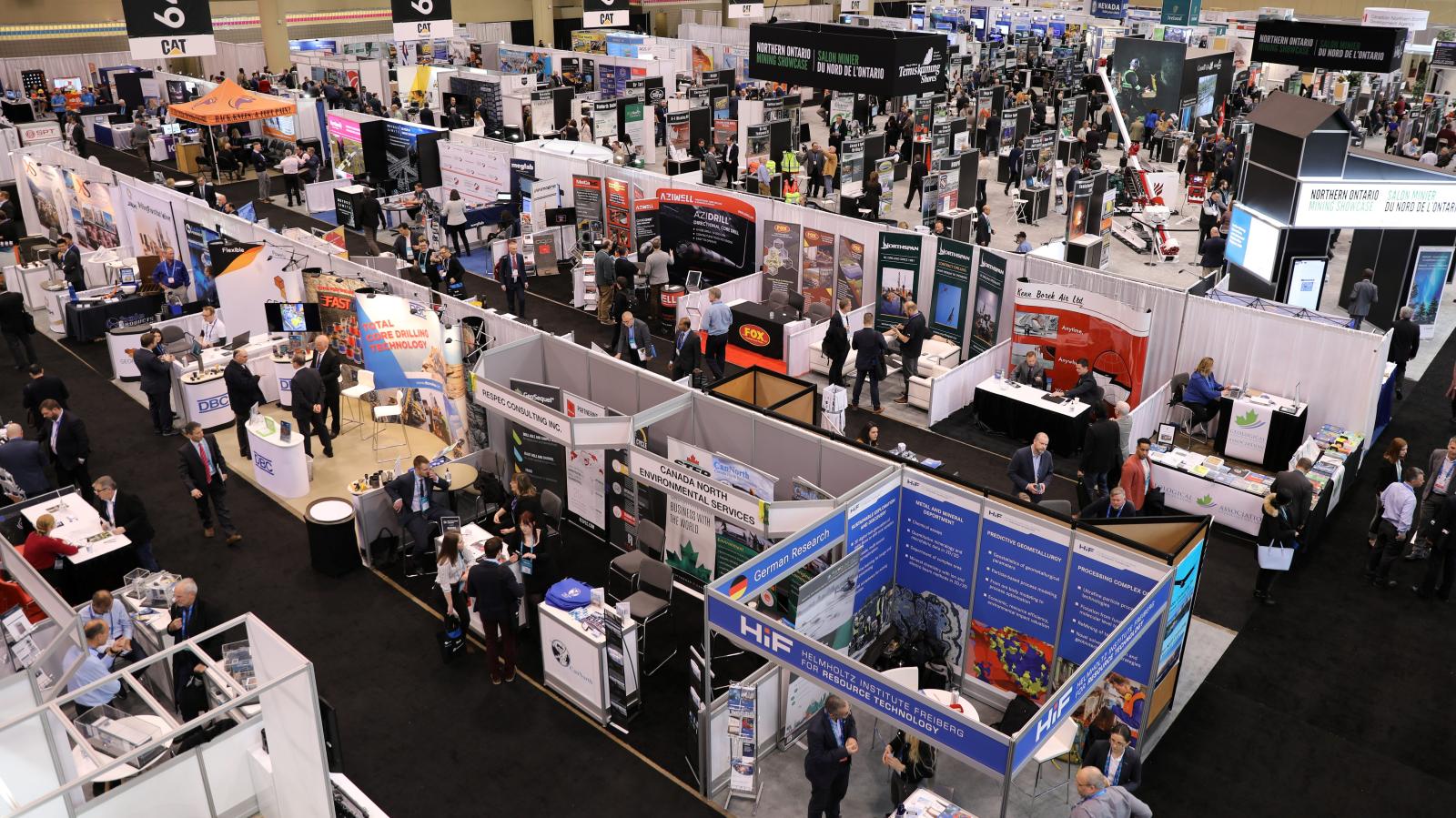12 May 2020 Brussels, BE) – Stick a few million software engineers in quarantine who have had a lot of time to think and tinker and … BANG! There they are, cooped up at home, getting frustrated with their current tools or platforms and wondering if they can spot some pain point, or mechanic, or small difference to the flow … and they go and create or solve some opportunity that no-one ever quite realized was there. Many see bigger “new new new” opportunities, and new structures. Yes, COVID has put us into forced experiments. But what technology is really going to stick? A more detailed post is in the works.
Right now, a brief look at the conference sector. And it’s a bit personal because my media team was selected to organise two virtual conference events for September. And I have been looking at all the developments in video conferencing, a market that looks oversaturated and impenetrable for newcos. While many VCs had this same sentiment in Zoom’s early days, the environment only looks more daunting as tech giants like Zoom, Microsoft, Google, Cisco, and even Verizon take part in the land grab.
But history does tend to repeat itself, and her name is disruption. I’ve been observing two growing trends … borne from all those software engineers being quarantined …. that pose even larger threats to Zoom than any of its direct competitors:
1. Verticalization: building vertically-focused applications tailored to particular use cases
2. Unbundling: the productization of underlying technology and features that make it easier to build custom solutions
I’ll return to those themes in that upcoming post on technology I just mentioned. Because just as natural forces reshape landscapes over time, verticalization and unbundling are natural processes that have been observed whenever any business dominates a horizontal market – such as Craigslist, LinkedIn or G Suite. Profitable markets attract startups and adjacent competitors that carve out verticals or products that they can better serve.
And pet peeve: there is no “new normal”. There are only three phases: “Before Normal” , “Normal” , and “Future Normal”. Because if you are in technology you know “Normal” changes every day. “New” is every day. The whole bloody point of the digital revolution is to adapt information strategy, technology strategy, and innovation strategy so that “Normal” is never a constant.
For this post, a brief look at virtual events which are being reimagined out of necessity, as conference after conference after conference goes online. It’s forcing us to reconsider how, when, and why we gather. My media team will be posting a detailed playbook so for now just a few points.
1️⃣ The trillion-dollar conference industry is racing to reinvent itself amid the Covid-19 pandemic.
Spring is a particularly busy time for professional conferences, but this year a global pandemic has forced the industry online. Hosting a good virtual conference isn’t simply a matter of transposing stage content and broadcasting it on the internet. That realization is fueling a burgeoning industry. Online speaking gurus are offering tips on esoteric matters like ideal Zoom backgrounds and how to convey authenticity online. Startups are pitching alternative online meeting platforms. There are even magicians who specialize in performing illusions for virtual conferences. They’re called—what else?—Alakazoom!
2️⃣ Conference organizers are experimenting with new ways to host virtual events.
Faced with New York City’s lockdown, Kerry Diamond, founder of the female-focused food media outlet Cherry Bombe, had a daring idea: to use Instagram as the main stage for a daylong conference. On the first weekend of April, she kicked off the Cherry Bombe Jubilee by instructing the attendees to bounce around various Instagram handles. This meant going to cookbook author Jessie Sheehan for a baking demo, then to the “Barefoot Contessa” for a chat about home cooking, then legendary disguise-happy restaurant critic Ruth Reichl for a book reading, etc., etc. It worked: 1,000+ attendees and it reached 180,300 Instagram accounts. Diamond is now considered one of the top “go to” conference organizers reinventing the quick virtual event format.
3️⃣ The challenges and opportunities are enormous, as evidenced by TED.
Last month, TED introduced a crazy-sounding premise: an eight-week long conference in your living room. The idea came from a rethinking of what exactly the TED conference is for, according to TED curator Chris Anderson:
TED is about the sharing of ideas and the building of community. Both of those things you can actually do when no one can move out of their homes courtesy of the internet”.
But he messed up. A five-hour “prequel” event, held online, was plagued by what a software engineer told me were obvious technical glitches that should have been foreseen, and a rather clunky collaboration platform (“they were thinking how can they use present collaboration tech when they should have thought what is the new tech we really need. A virtual event is a totally different animal”).
4️⃣ This shift has given rise to a gaggle of gurus providing advice on how to stage produce your presentation.
Golly, job opportunities. Who’d a thought!? So virtual conference gurus are popping up all over the place. For the most part, virtual presentations and conferences are low-fi solo productions. But the coronavirus lockdown has made them a central part of our work life. And in many ways, our addiction to social media has given us a measure of fluency in online self-presentation – thank God we have all that experience in taking selfies and Instagram videos. Still, being asked to be actor, director, set designer, and cameraman of our own production is a tough ask of even the most seasoned speaker. So most of us could use a bit of coaching on improving our online presentation and production skills.
And some new alliances. Many companies and event organizers know that to create powerful and engaging events that take virtual audiences into account and command the same dollars that live events historically have means new thinking. So I am seeing partnerships with creative minds from the TV world, the theatrical world, and the experiential that is highly produced and warrants people to pay for it.
I’ve collected some of the best, basic advice out there (see bottom of post) for how to create a professional virtual conference.
5️⃣ Today’s online experiments will determine what in-person events look like.
Conference organizers are taking notes for a future when gathering returns. For the tech industry, the virtual conferences launched by the IEEE Conference unit hint at a template. But the biggie will be CogX, one of my favourite tech events, which had 16,000 people attend in person last year. It is going totally virtual this year and they may set the standard.
Last word goes to Don Neal, founder of 360 Live Media:
“The strong conference players will stay stronger (as will new players) if they develop new skills to stay in the game. But they’ll be fighting with companies and attendees who are now forced to reconsider the how, when, and why they gather for these things. So I think you’ll see after quarantine orders are lifted that companies and organizers will create engaging hybrid events that cater to both physical and digital audiences, altering the way we connect to one another and share experiences, and thereby creating new revenue streams.
And what about your next IRL (in-real-life) conference? What’s on deck? Well, two fairly large tech conferences are testing the waters this fall (still tentative) and they tell me to expect:
• medical-grade disinfecting UV LED lights
• cleaning robots
• on-site telemedicine
• fever sensors
• buckets of hand sanitizer
And a new biggie: flexible event contracts. During an Ad Age webinar yesterday on the future of the advertising world’s big on-site events it was noted the biggest changes will be how organizers and clients negotiate contracts. Contracts between event organizers and their business partners usually have milestone contingencies that ensure deliverables within a certain timeline. The coronavirus pandemic will make contracts of the future more flexible to allow for unexpected changes while keeping business relationships intact: changed business strategies, delay payment schedules, etc.
And the new reality of the Covid-19 pandemic, force majeure – a possible clause in a contract that may free both parties from their contract obligations in the case of a “superior force” that makes fulfilling them impossible – has become a line of last defense for many meeting organizers. As I discussed in a much longer post whether Covid-19 is a force majeure event for companies now is very dependent on the specific words written in existing contracts. But future force majeure clauses between business partners may need to include language that acknowledges a pandemic as a force majeur event, as well as potential regulatory or governmental orders that restrict organizers’ ability to execute obligations including quarantines, travel bans, and restricted gatherings.
Also, what to do about better health standards. Once mandated social distancing comes to an end, event organizers will need to work hard to regain attendees’ trust. In the webinar I noted above, a representative from one of the largest tech conferences in the world, CES, noted this will require new contingency plans that apply to multiple scenarios, many that we aren’t even yet aware of. Features like deep cleaning, frequent disinfection and sanitizing, gloves, and face masks are likely to become standard. Organizers will need to come up with new ways of allocating space to isolate staff and attendees when needed.
Because even if social distancing is no longer mandated, the behavior may linger on for a while. If social distance is the new norm, and you triple the distance between people, do you triple event space, which means higher costs? The question goes beyond space. For instance, will organizers have to reconsider whether attendees are comfortable with buffet-style dining? Or will people prefer more sanitary pre-packaged meals? A few months ago, something as seemingly inconsequential as hand sanitizer wasn’t a foremost thought on anyone’s mind. Today, it’s become its own form of currency.
Now, there is a massive opportunity for new technology here, which I’ll detail in a subsequent post, such as emergent sterilizing tools, which incorporate the germ-destroying power of UV technology. Promising appliances showcased this year at CES (little did they know) included:
• the Steri-Write, the first UV-C LED sanitizer created specifically for pens
• Phillips and RayVio’s suite of medical grade disinfecting UV LED lights that can be used for a variety of purposes including in air cleaning, high touch surfaces, and water.
• updated automated cleaning robots such as Softbank Robotics’ pepper robot and autonomous cleaning solutions
Also on deck: on-site telemedicine to attendees. If they aren’t feeling well, they can contact someone and determine whether they should board an airplane.
The most important change? redesigning the purpose of events. While a lot of organizers are optimistic that there will be a renewed demand for live events, they also anticipate that the reasons for gathering will change. Don Neal of 360 Live who I quoted above sees this happening:
I think people will discover, being in this current virtual environment, how much more important it is to connect and collaborate with people. We are seeing organizers who plan IRL events redesigning them with more space for that. And we’ll see more partnerships, especially among smaller trade associations with limited resources. And given this is an ecosystem that’s very interdependent, we’ll see more hotels and organizers taking a vested interest for an event to succeed. I predict there will be long-term implications of relationships that are strained because of the present financial pressure.
For many organizers I spoke with, it’s a needed disruption. The constraints with the “only live” events business model is their limited measurability and scale. Now, combining streaming live, technology, and experiential, you are talking about reaching new audiences, creating new revenue streams.
* * * * * * * * * * * * * *
How to set the stage for a professional teleconference
Learn the lingo
One of the first steps to mastering a new skill is learning its parlance. Here are a few common terms:
• Brady Bunch view: A setting on Zoom where you can see all the participants on the screen, derived from the opening credits of the 1970’s American sitcom of the same name. Also referred to as gallery view or “Hollywood Squares” mode.
• Ring lights: A lighting rig popular with the YouTube make-up tutors. Originally developed for surgery rooms and dentist chairs, fans of the halo-shaped contraption say it imbues the presenter a “glowing-from-within” aspect. Selfie aficionados tote smaller versions of the ring lights designed to clip over the smartphone camera.
• Ring light eyes: A telltale white orb reflected in a person’s pupil indicating a ring light is being used.
• Mirror effect: To flip one’s appearance on a video call. This is useful if you are flashing text meant to be read or using your hands to convey instructions.
• Synchronous vs asynchronous: Synchronous is a live session where interaction among presenters and participants is encouraged; think company meetings. Asynchronous refers to self-paced learning mode where participants can parse pre-recorded content at their leisure; think that employee training module HR keeps reminding you to complete.
• Telepresence: A virtual conference set-up designed to make participants feel like they’re all in the same room. Companies who invest in the technology believe that simulating an in-person meeting improves collaboration and group participation. Tokyo’s Business Breakthrough University recently deployedNewme telepresence robots so students quarantined at home can still participate in their graduation ceremony.
• Virtual presence: A meeting set-up that allows participants to enter and explore immersive environments.
• zWarDial: An automated tool used to find the unique meeting ID of open Zoom calls. Without a password, meetings are susceptible to hackers. “Zoom Bombers” can locate up to 100 meetings per hour with zWarDial.
Prep/Be Ready
The top tip for virtual presentations: Keep it short. Go down on time if you can. Even if everyone is at home right now, there’s so much going on. The burden of having to sit down for a 60-minute meeting is exceptionally high.
If there’s a lot to go through, consider grouping content into sections or even pre-recording videos that participants can view on their own time. While you’re at it, consider if you need to gather a group at all. The point of any presentation is to move an audience from point A to point B. If that doesn’t matter to you, then don’t use a presentation. Send an email or a text instead.
If you are going to use a presentation, prepare your slides in advance with tips from New York governor Andrew Cuomo’s PowerPoint graphic designer. The governor’s much-talked about Covid-19 slides are effective because they prioritize legibility over slickness; keeping in mind that some users may be seeing them on a small mobile device screen. The lesson here: Reinforce a key message by letting it stand alone on a slide.
Then, prepare yourself. Even if people aren’t seeing you on a big, high-definition screen, getting yourself camera ready with a bit of makeup will help get you in the right mode to present. For women, celebrity makeup artist Vincent Oqueno recommends a bright blush. “Here’s the thing about FaceTime and Zoom calls: Although they’re HD, you can look sort of washed out. Adding warmth to your cheeks will make you look like you have more life.”
Oh, men can prep their faces too. YouTuber Joseph Linaschke, aka “PhotoJoseph,” recommends a quick routine: “If you do nothing else, blot out all the extra oil from your face with some oil-absorbing sheets. Oily patches on the temple, nose, and chin or T-zone register as distracting “hot spots” on camera.”
Practice looking into the lens. Maintaining eye contact with audiences improves a presenter’s trustworthiness, but this skill is harder to achieve on video calls because a majority of us are stressing about how we look on screen. Advisors call it “mirror meditation” : a daily habit of staring in the mirror for 10 minutes. That doesn’t mean engaging in a bunch of ‘woo-woo’ affirmations. Channel a generous, nonjudgmental feeling toward your own image.
Oh, and there is a practical hack for this 🙂 Take that little selfie window that you have in Zoom and I move it all the way up to the top of your screen, right next to that camera lens.
Your “film set”
Once you’ve gotten yourself together, it’s time to take a look at your surroundings, with an eye to what others will be seeing.
First, check your lighting. Celebrity portrait photographer Matthew Rolston says a “little bit of glow” is easily achievable. “A simple desk lamp over the lens of your device is going to be flattering for everybody. You could even use a lamp with a shade or it could be a window—anything that would light you from the front. You don’t want to be back-lit, you don’t want to be side-lit, you don’t want to be lit by the screen from underneath and look like a blue Frankenstein.”
Then, take a minute to add some visual interest to your background. How much do you need? Well, I’m not sure but here’s interior design impresario Jonathan Adler: “F is for festoon. This might be the only time your colleagues get to see chez vous so make sure everything looks KAPOW! A banana bud vase, a provocative needlepoint pillow, a muse vase with fresh flowers—these accessories will lead to a promotion once this nightmare is over.” Well, maybe 🙂
Next check how you’re framed on screen. Many professionals abide by “the rule of thirds” which involves imagining a horizontal and vertical grid dividing your screen into nine parts. Your mobile phone camera demonstrates this grid.
The principle recommends positioning your face slightly off center, in the vicinity of one of the intersecting points on top of the frame. Amateur photographers make the mistake of placing their subjects in the center of the frame because ‘it looks right.’ When a composition is too symmetrical, we see it, like it, get bored and look elsewhere. With a composition that’s slightly ‘off,’ following the rule of thirds, our eyes get a little frustrated and intrigued.
Tweak the camera angle. Is there anything worse than looking up at someone’s nose? Position your laptop or device at eye level and sit back a bit so you’re seen from the chest or waist up. This is more natural for the viewer. This is especially beneficial if you tend to gesture a lot.
And listen: a common at-home video conferencing trope that needs some scrutiny. Using tomes in your background to bolster their credibility – like a literary word cloud. Drop it. Or be funny. I use the Trinity College Library in Dublin:
Action!!
Finally, it’s time to take the spotlight. I recommend standing when you present. This allows you to leverage deep breathing and even gestures and movement. It doesn’t even matter if you’re showing video. It just helps to stand and present. Speak directly into the microphone, with enough distance to not introduce clipping. Generally, it’s a good idea to move the microphone at least a few inches away from your mouth, and position it slightly lower so that vocal plosives (i.e. popping vocal sounds with “k”, “p”, etc) are less emphasized. Nicole Lowenbraun, a San Francisco-based speech pathologist and executive speaker coach, offers voice training tips such as being aware of uptalk, which
… can give the impression that you’re asking a question rather than giving a statement and that you’re not standing behind your own ideas. Upward inflections will rob you of your authority. Embrace your accent, but remember to articulate. We are all communicating globally now, so if you speak a different language than your audience, you have to make sure that they can understand every single syllable that you’re saying.
Varying your intonation when presenting is a simple way to introduce novelty and hold people’s attention. The best way to put people to sleep is to speak in a monotone. We’re not all delivering really exciting information, and that’s okay. You can increase or decrease your volume. You can pause before or after an important word to isolate it … punch your words and make it sound exciting.
And be bloody confident. Just assume you’re crushing it. You can’t let negative self talk get in the way or start worrying about the silence. You did your homework, you’ve got good content. Keep going. That’s going to help you feel better as the speaker.




